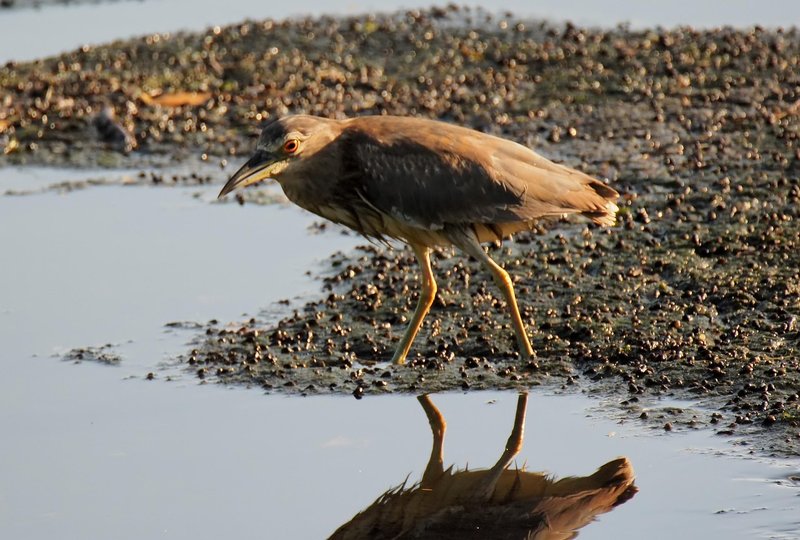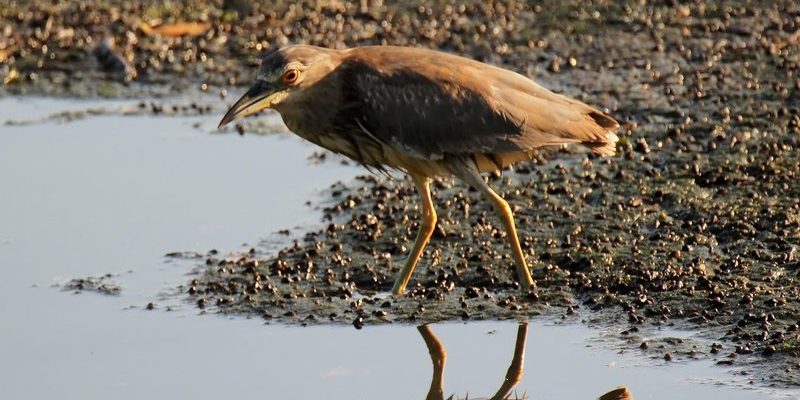
Imagine a quiet wetland, where herons hunt amidst the reeds, their silhouettes painted against the backdrop of a setting sun. This tranquil scene is becoming less common as habitat destruction and climate change begin to take their toll. Herons are not just beautiful creatures; they play an important role in their ecosystems by controlling fish populations and contributing to the health of wetlands. So, what are we doing to protect them? Let’s dive into the world of heron conservation and explore the dedicated efforts aimed at safeguarding their future.
Understanding Heron Habitats
Herons thrive in wetlands, marshes, and along coastlines. They need a mix of shallow and deep water to hunt effectively and a variety of vegetation for nesting. These habitats are not only home to herons but also support countless other species. Unfortunately, many of these areas are under threat from human activity.
Wetland destruction, often caused by urban development or agriculture, is a significant issue. When these areas are drained or filled in for building homes or farms, herons lose their homes and food sources. Moreover, pollution from runoff can contaminate their feeding grounds, making it difficult for them to thrive. This is a cycle that not only affects herons but entire ecosystems.
What’s the solution? Conservation programs that focus on protecting and restoring wetlands can significantly benefit herons. By preserving these critical habitats, we help ensure that herons will have the spaces they need to hunt, nest, and flourish.
Active Conservation Programs
Across the globe, various organizations are dedicated to heron conservation. Their efforts range from habitat restoration projects to awareness campaigns aimed at educating the public about the importance of these birds. For example, in the United States, the National Audubon Society conducts numerous initiatives focused on protecting bird habitats, including those of herons.
One example of successful conservation is the restoration of the Great Lakes wetlands, which has improved conditions for herons and other wildlife. These projects often involve planting native vegetation, cleaning up polluted areas, and creating protected zones where birds can nest safely.
Additionally, local partnerships are crucial. Many local groups work with governments to ensure that conservation policies are enforced. Engaging communities not only enhances conservation efforts but also builds lasting support among people who will benefit from healthy ecosystems.
Research and Monitoring
Research plays a pivotal role in heron conservation efforts. By studying heron populations and their behaviors, scientists can gain insights into what is working and what isn’t. For instance, tracking migration patterns can reveal how environmental changes, such as climate change, are affecting their movements.
Using advanced technology, such as GPS tracking, researchers can monitor heron movements and nesting behaviors. This information helps conservationists identify critical habitats that need protection and further conservation efforts.
In addition, ongoing studies can highlight potential threats, like changes in fish populations due to overfishing or pollution. By understanding these dynamics, conservationists can work to create sustainable practices that will benefit herons and the broader ecosystem.
Community Involvement
Community involvement is vital for successful conservation. When people feel connected to their local wildlife, they are more likely to support protective measures. Educational programs focusing on herons, their habitats, and the importance of wetlands help foster this connection.
Schools and local organizations often host events such as bird-watching tours or habitat restoration days. These activities not only raise awareness but also empower people to take action. For instance, local volunteer groups might organize clean-up events to remove debris from heron nesting sites, ensuring that these areas are safe and accessible.
You might also see campaigns encouraging locals to plant native species that can provide food and shelter for herons and other wildlife. By nurturing a culture of conservation, communities can create a protective buffer around these stunning birds.
Legislation and Protection
Laws and regulations play a crucial role in heron conservation. In many countries, herons are protected under wildlife conservation laws, which seek to preserve their habitats and regulate hunting. For example, the Migratory Bird Treaty Act in the U.S. provides legal protection for migratory birds, including herons.
However, laws alone aren’t enough. Advocacy groups work tirelessly to ensure that these regulations are enforced and that new policies are put in place to address emerging threats. These organizations often lobby for stricter pollution controls, habitat preservation initiatives, and sustainable land-use practices.
In addition, international collaborations are essential for migratory species like herons. Birds in one region depend on habitat conditions in another, so global cooperation is necessary to ensure their survival.
The Role of Education and Awareness
Education is a powerful tool in heron conservation. The more people know about herons and their ecological importance, the more likely they are to support conservation efforts. Schools, nature centers, and local organizations host workshops and seminars to raise awareness about the challenges facing herons.
Social media campaigns also play a role. By sharing beautiful images and stories about herons, organizations can inspire people to care and take action. You might see captivating videos of herons in their natural habitats circulating online, driving home the message of why we need to protect them.
Additionally, storytelling can be an impactful way to connect with others. Sharing personal experiences of observing herons in the wild can encourage others to appreciate these birds and recognize their importance in our ecosystems.
Caring for herons and their habitats is a shared responsibility. It takes a blend of dedicated conservation efforts, community involvement, solid laws, and education to ensure these beautiful birds thrive. Each of us can play a part, even in small ways, like spreading awareness or participating in local conservation events.
Herons have been around for millions of years, standing as a testament to resilience and beauty in nature. By coming together to protect them, we not only ensure that they continue to grace our wetlands but also safeguard the delicate balance of our ecosystems. So next time you spot a heron, remember: it’s not just a bird; it’s a crucial part of the natural world we all share.

